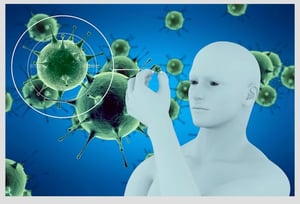As explained in the scientific journal PLOS One, the US researchers first of all compiled a very broad list of viruses that are pathogenic for humans, also including all their known biological characteristics, in order to identify those more likely to be associated with the spill-over. Then, they demonstrated that among the “risk factors” (i.e. the factors capable of facilitating a transmission of a virus from animals to humans) elements like the absence of an external lipid envelope (i.e. an envelope made up of fat molecules) or the detection of the virus in the liver, nervous system or respiratory tract, among others, have to be taken into consideration as the “preferred” environment.
Another risk factor, for humans, is the ability of the virus to also infect non-human primates, such as monkeys and gorillas. On the basis of these characteristics, it was then possible to develop a mathematical model that – according to the researchers – makes it possible to predict the human transmission ability of viruses with over 84% accuracy. And that is not all: this model also makes it possible to identify which – among the viruses that can be transmitted from animals to humans – can also be transmitted from human to human, thus becoming sources of human diseases.
Finally, the US researchers applied this model to a series of animal viruses never isolated from humans, finding 47 of them to have a high possibility of transmission. According to the researchers, the most dangerous are the Amdoparvovirus 1 (found in several types of wolves), the Hendra virus (horses), the Cardiovirus A (pigs), the Rosavirus (rodents), the HTLV-3 and HTLV-4 viruses (monkeys) and the Simian foamy virus (monkeys).
There is still a lot of work to be done, but the information collected could already have immediate practical applications, for example in the programming of the monitoring of seemingly harmless outbreaks, and in counterstrategies, such as the search for new vaccines.

